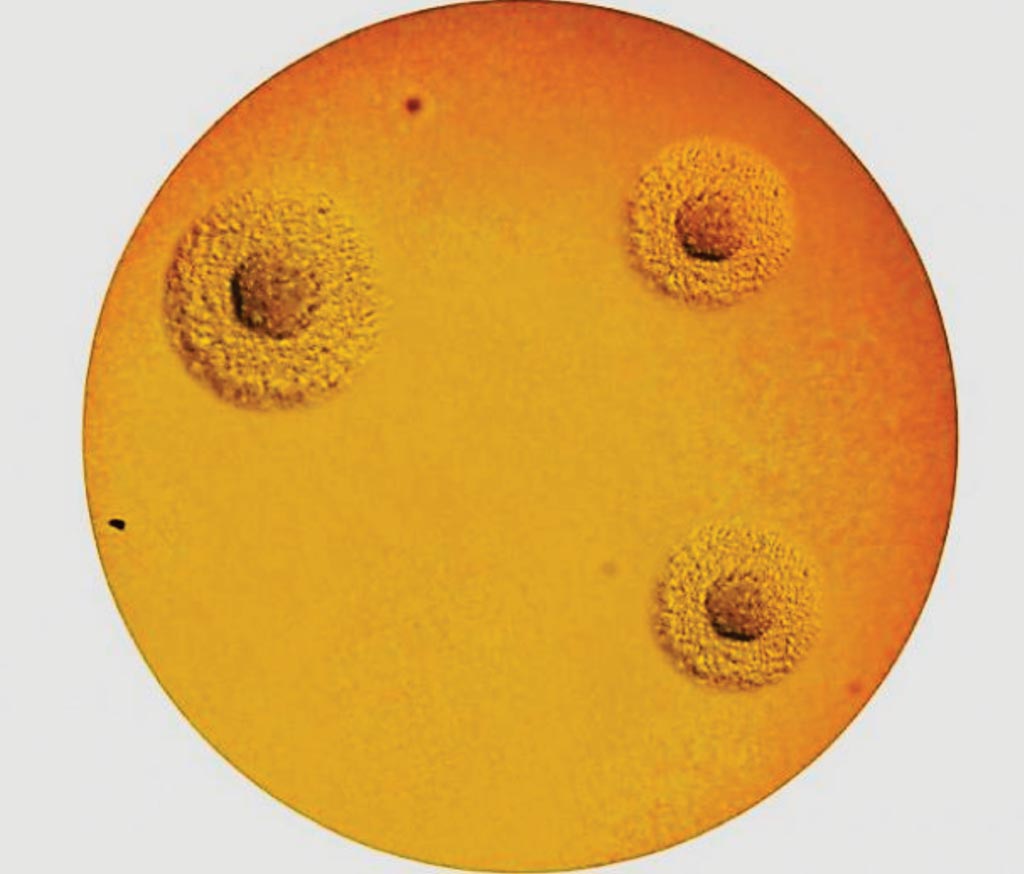Antibacterial Resistance Revealed in Women with UTIs
By LabMedica International staff writers
Posted on 08 Sep 2017
Nearly 20% of women aged 15-29 are diagnosed with a urinary tract infection (UTI) and antibiotic resistance prolongs UTI treatment and resistance profiles vary regionally. This regional variation is an important consideration in guiding empirical treatment selection.Posted on 08 Sep 2017
Regional studies in the USA have identified tetracycline resistance in over a third of Ureaplasma spp. isolates, but no studies have evaluated antibiotic resistance levels in college-aged women with first-time UTI, which has been estimated at USD 3.5 billion in USA costs.

Image: The A7 Agar enables the culture, semi-quantitative enumeration and the morphological identification (solid method) of Ureaplasma urealyticum and Mycoplasma hominis (Typical “fried egg” appearance”(Photo courtesy of the ELITech Group).
Scientists at the University of Florida (Gainesville, FL, USA) tested a panel of antibiotics and determined the minimum inhibitory concentrations (MICs) of Ureaplasma spp. and 10 Mycoplasma hominis isolates obtained from urine of college-aged women with first-time UTI. The study included 180 women with symptomatic first-time UTIs, along with 80 age-matched controls and 35 of the women had recurrent UTIs.
The investigators reported that low antibiotic resistance was found in this population of women with first-time UTI. Two U. parvum isolates were resistant: one to levofloxacin (MIC: 4 μg/mL) and one to tetracycline (MIC: 8 μg/mL). All M. hominis and U. urealyticum isolates were sensitive. For the Ureaplasma spp., MIC90s were highest against gentamicin (21 μg/mL) and lowest against doxycycline (0.25 μg/mL). When comparing MIC levels between Ureaplasma spp., U. urealyticum had significantly higher MICs against each antibiotic except doxycycline.
For resistant isolates, the genetic mechanisms of resistance were determined. Polymerase chain reaction (PCR) amplification identified tetM present in the tetracycline resistant isolate, and a S83W mutation within the parC gene of the quinolone resistant isolate. Mary B. Brown, PhD, a Professor in the Department of Infectious Diseases and Immunology, said, “To our knowledge, this is the first report of this specific genetic mutation in Ureaplasma in the USA, and only the third report anywhere in the world. Antibiotics like penicillin and the other β-lactamases that interfere with cell wall synthesis are totally useless against the Mollicutes.” The study was published on August 21, 2017, in the journal Antimicrobial Agents and Chemotherapy.
Related Links:
University of Florida









 assay.jpg)




